2024 saw the exciting news that we were to get some funding from Farming in Protected Landscapes (FiPL) not only has this funding made our activities accessible to the local community but it has helped in the sustainability of our small farm by connecting with interested people who we hope will continue to use our services. Due to one participant being profoundly deaf the FiPL team quickly responded with financial support to cover a BSL interpreter enabling her to attend a course she would not otherwise have managed to be a part of. As a result the whole family joined the community garden throughout the summer too, we have all learned some sign language on the way over lunch with the little ones and there are plans ahead for us to run a BSL course at the farm to ensure ongoing inclusivity.
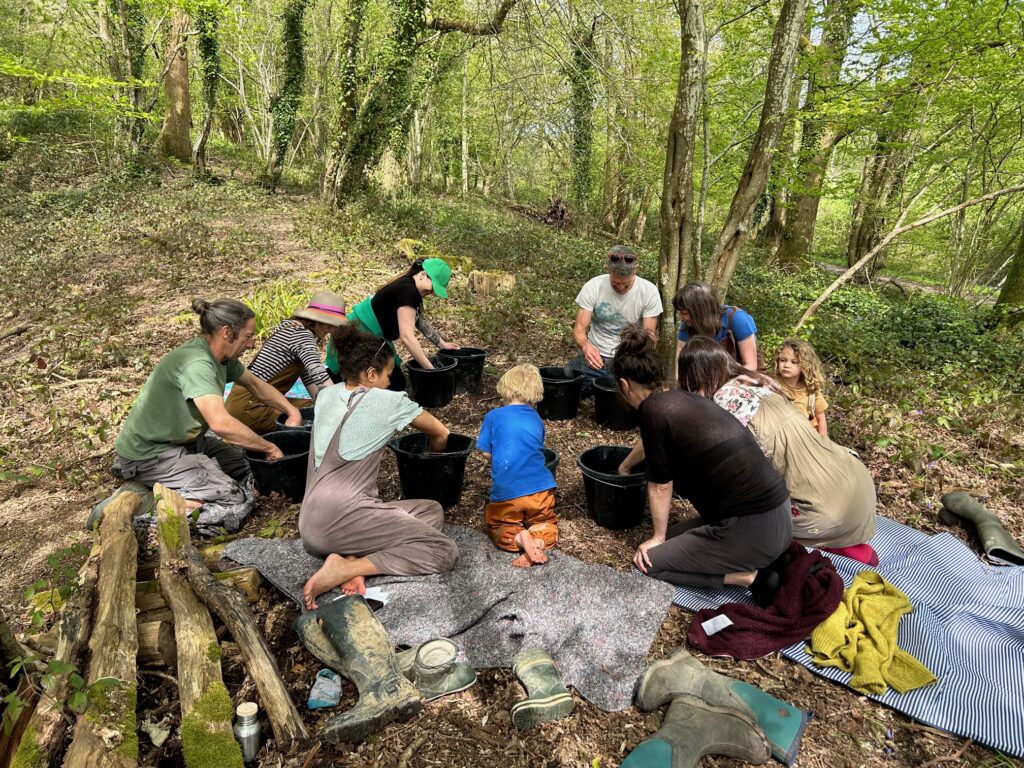
Enjoying the sunshine while shading beneath the oak trees we stirred a biodynamic prep, little voices sang while bigger voices chattered, we spread the precious potion of vitality onto all of the land to enliven, enrich and fill the soil with life-force. The micro organisms in our soil are of utmost importance to us as they are the foundation of all life that springs from it.
Biodynamics in the High weald – The Biodynamic Course held over a weekend in May commenced with promising start. Beginning with an introduction to Green Oak Farm, a small Organic and Biodynamic Farm operating in the beautiful woodland valleys of the High Weald, we considered the relationship of a Biodynamic farm existing within the surrounding countryside, specifically the High Weald due to the historical nature of small farmsteads lending themselves to utilising small fields and paddocks which are surrounded by dense inhabited woodland. Biodynamics is a holistic process of farming that encourages environmental biodiversity and protection of wildlife habitats, incorporating and working alongside natural rhythms from the smallest micro biome of the soil to the largest influences of the cosmos as a holistic container. Biodynamics attempts to enable humans to live harmoniously and in reciprocity with this natural environment and so requires the support of plant and animal biodiversity whilst encouraging a natural balance to develop and support symbiotic living. The High Weald being a heavily wooded and mixed landscape with rich soils that hold water and nutrients offer ample opportunity for wildlife to thrive and so is the perfect setting for a Biodynamic small farm to flourish.

Throughout the weekend, Hans Gunther Kern provided a comprehensive introduction to Biodynamics, exploring the cosmological influences on life on Earth, including soil, plant, animal, and human health. Participants delved into the basics of biodynamics and examined the detrimental impacts of industrialisation and conventional farming practices. The course also covered topics such as carbonsequestration in soils and plants, as well as techniques that promote environmental improvement rather than harm. Emphasis was placed on connecting with the soil and surroundings without relying on digital devices or chemical application. The interconnected and holistic nature of all aspects of farming and life was highlighted, underscoring the benefits of enhancing biodiversity and natural habitats around agricultural areas to improve overall productivity and sustainability. Attendees were taught to assess soil health through careful observation, such as observation of the soil, examining weed growth, identifying soil composition, analysing deficiencies, and discussing potential solutions. Additionally, the course explored how different growing systems can impact nutrition and health, both positively and negatively.
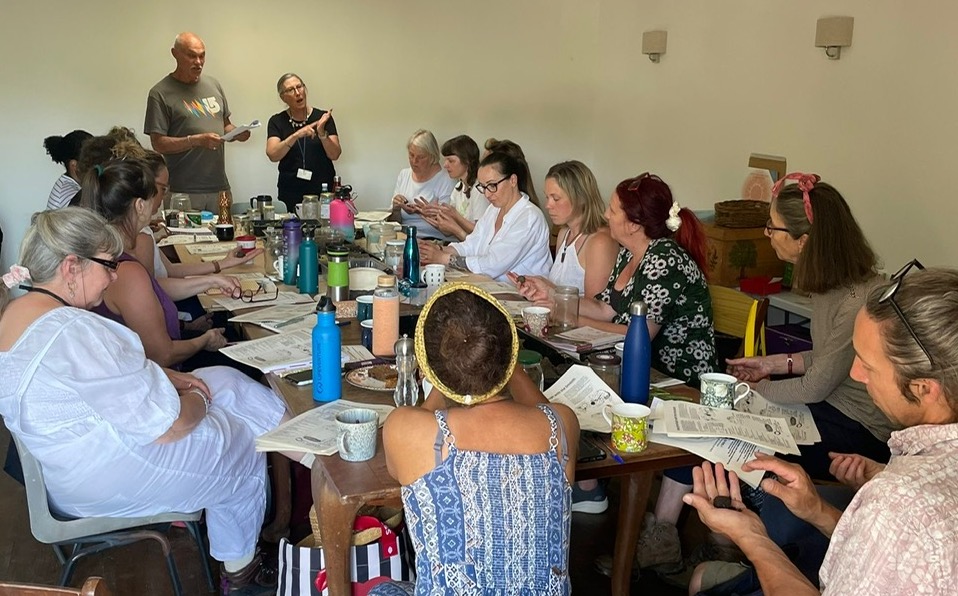
Emphasis was placed on connecting with the soil and surroundings without relying on digital devices or chemical application. The interconnected and holistic nature of all aspects of farming and life was highlighted, underscoring the benefits of enhancing biodiversity and natural habitats around agricultural areas to improve overall productivity and sustainability. Attendees were taught to assess soil health through careful observation, such as observation of the soil, examining weed growth, identifying soil composition, analysing deficiencies, and discussing potential solutions. Additionally, the course explored how different growing systems can impact nutrition and health, both positively and negatively.

The weekend in June, Joanna Gore began by providing an overview of Biodynamics, using a PowerPoint presentation to refresh and fill in any knowledge gaps for beginners, as well as discussing the nine Biodynamic preparations. Hans Gunther delved into the biodynamic preparations further, focusing on compost preparations and emphasising the importance of healthy living compost as the heart of a Biodynamic farm. Participants received a detailed analysis of the essential elements required for high-quality compost, followed by a hands-on session where they created compost using various materials sourced from the farm.
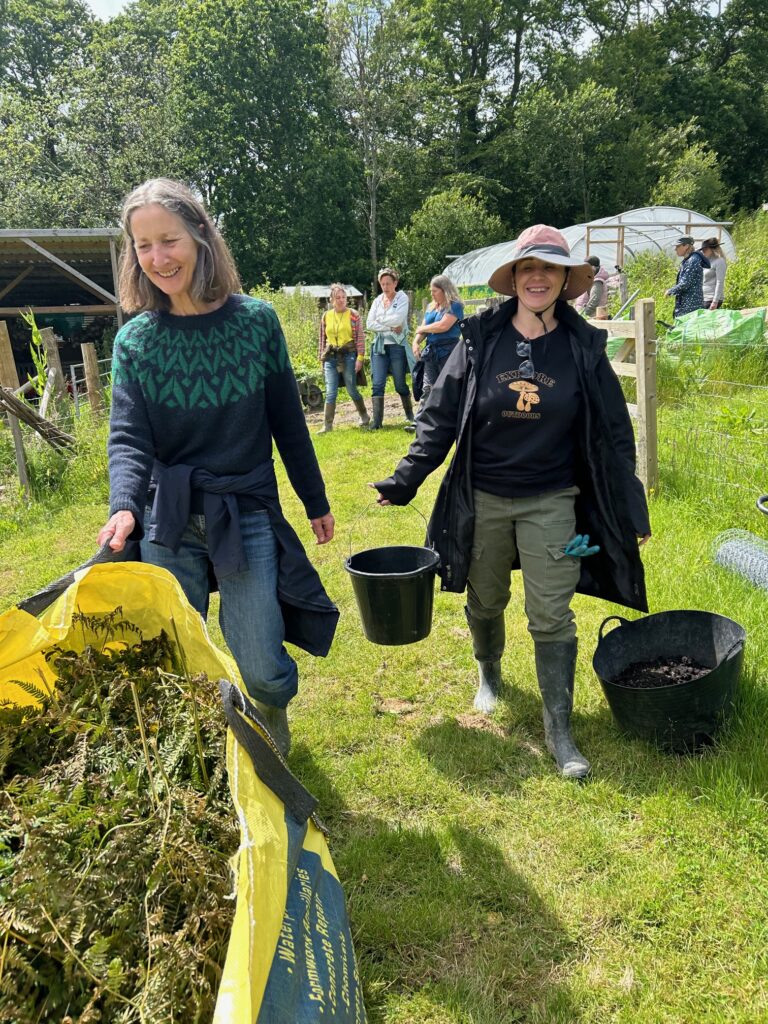
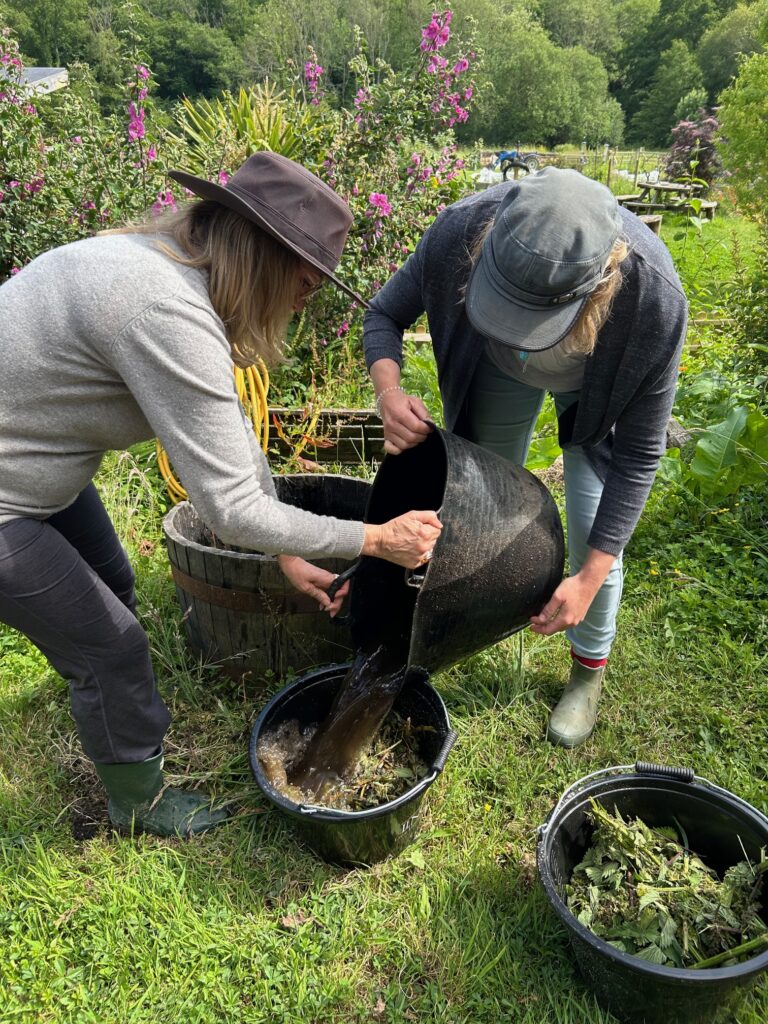
The course also included a theoretical introduction to crafting tray substrates and potting compost, with a practical demonstration to follow. Activities such as pricking out and potting on seedlings, nursery work, and companion planting were explored. Additionally, participants engaged in a practical exercise that involved making Biodynamic compost from start to finish, including stirring Valerian and applying Biodynamic compost preparations. They also learned how to create fertilisation teas using nettle, comfrey, and a pest control tea made from fern. Nursery work, pricking out, and creating tray substrates and potting composts were further demonstrated during the course. Joanna added the value of on farm growing throughout the course, whereby animals are needed not only for pasture health and production of fertilisers but also for creating living composts teaming with bugs which create soil life and support the farm eco system as a whole.
In July, we started by looking at balancing Fauna and Flora; how to care for our cultivated fauna and flora, prevent natural flora (weeds) from becoming dominant or ‘out of balance’ so we can get a healthy crop of food. We looked at working with many natural species of flora as natural companions while building biodiversity through diverse habitat creation around and inside growing areas. Such biodiversity starts in the micro-biome of the soil, to the fauna and flora we allow to flourish around our veg and herbs, to the edges and paths of our growing areas, to the pastures and trees in our paddocks and farm fields, to the wider landscape of the woodlands, lakes and fields surrounding our farm. While at the same time of course incorporating the wildlife in the air, the water in our puddles, streams, rivers and lakes right out to the atmosphere and the wider universe. And so we considered balancing fauna and flora in our growing areas and the importance of this in our pastures, so that our animals eat a diverse set of herbs and grasses, keeping them well at the same time as adding diverse nutrients for our compost, which will then be used to fertilise our veg beds via our in house compost creation. When we start at soil level, building fertility and life we have a balancing affect on the whole system.
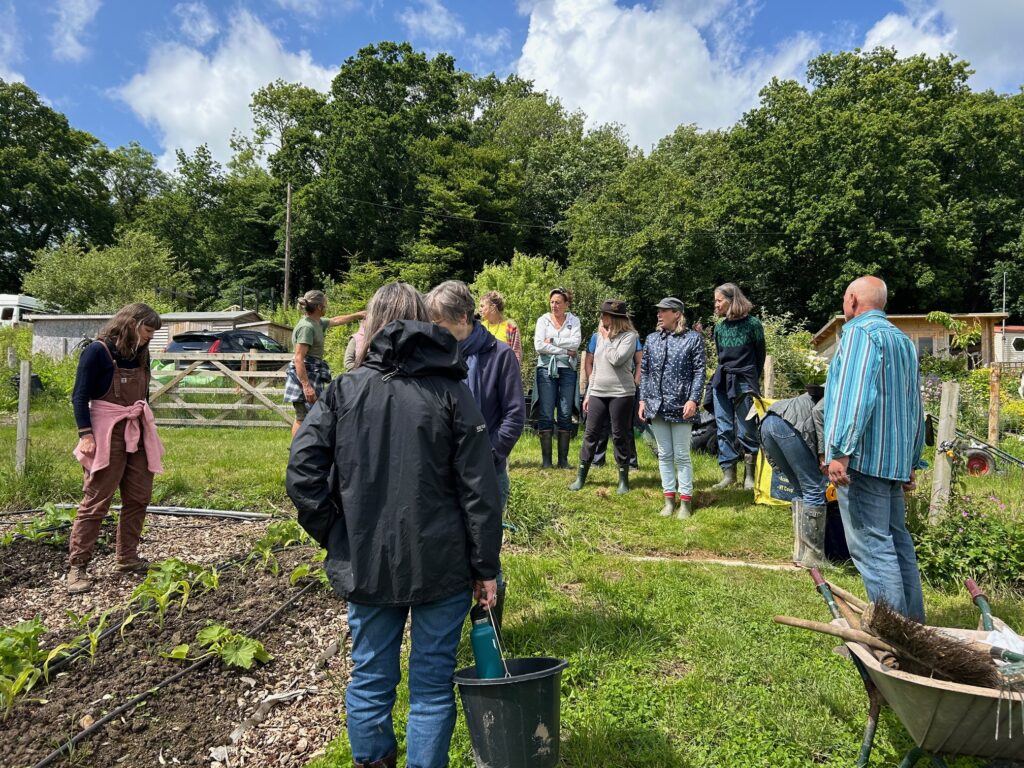

We looked into how to prevent pests and diseases the natural ecological way, through balance, the benefits of companion planting and natural and cultivated flora. We integrated homeopathic pest management in a practical workshop making repellents for squirrel, flies, aphids, dock and thistle. Using home made herbal teas for fertilisation, herbicides and pesticides where things got out of balance. We learned about preparing for the autumn and winter months; making use of natural rhythms for best harvesting and storage, we planned and looked at succession planting, working outdoors and in cold frames as well as green houses and polytunnels. We did both theoretical and practical applications of the cosmos and the affect this has on the sun, moon and all life on earth including the plants, animals and of course on ourselves too.
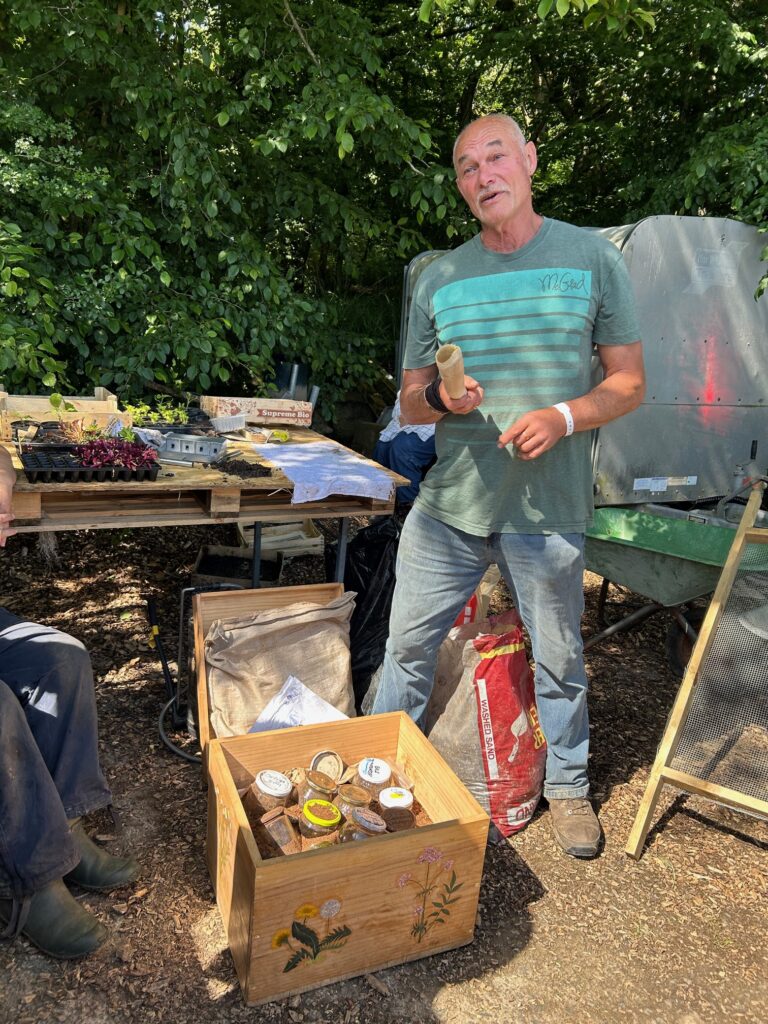
Overall, participants have gained a profound understanding of holistic farming and growing techniques that honour and harmonise with the natural rhythms inherent in nature. They have learned to respect wildlife habitats and appreciate how plants, herbs, and animals can be used to collaborate in cultivating fertile soils and thus fostering vitality nutrition and health in all living beings involved in natural food chains. They have learned how the natural landscape of the High Weald lends itself perfectly to small farmsteads, cultivating small fields surrounded by woodland adds to biodiversity and so brings the natural balance strived for in Biodynamic Farming. Due to the overwhelming response to this course, we intend to continue to run a Biodynamic Farming/growing course every year from this point on and may split it into two, Growing and Farming as the content is rather vast, they will however always been taught as an integrated wholistic process.
The lasting benefits of the biodynamic learning experience extend beyond the immediate course content. Participants have expressed a keen interest in implementing biodynamic and holistic, pesticide-free growing practices in their own gardens and allotments in the future. Equipped with a solid understanding and enthusiasm for natural farming and growing, they are eager to share their newfound knowledge with others and have started to do so through their social media channels. There is a better understanding of how wholistic and biodynamic farming and gardening integrates perfectly with the setting of the High Weald, its history of small farming and the topology of the landscape.
